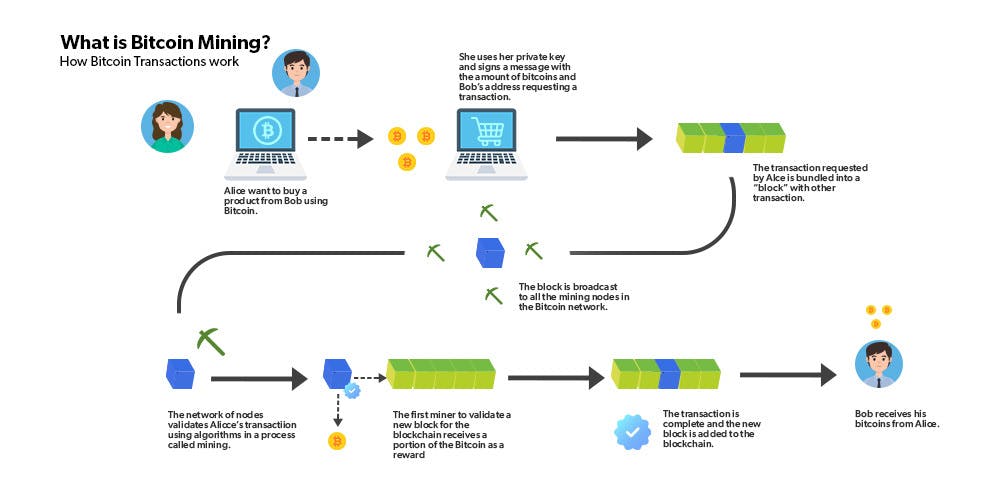It's been 4 days since I started learning Blockchain Development with the initiative of #100daysOfweb3 and this article depicts all the learnings that I have acquired about Blockchain in the following week.
So starting with, this week I took some time to learn about the basics of Blockchain Technology from a Youtube channel, CodeEater.
The basics are divided into three parts Blockchain, CryptoCurrency & Smart Contracts. Among these, I will be talking about particularly Blockchain today.
What is Blockchain?
Blockchain is a shared, immutable ledger that is completely transparent facilitating the process of recording transactions and tracking assets in a business network. An asset can be tangible (a house, car, cash, land) or intangible (intellectual property, patents, copyrights, branding). Virtually anything of value can be tracked and traded on a blockchain network, reducing risk and cutting costs for all involved.
Business runs on information. The faster it’s received and the more accurate it is, the better. Blockchain is ideal for delivering that information because it provides immediate, shared and completely transparent information stored on an immutable ledger that can be accessed only by permissioned network members. A blockchain network can track orders, payments, accounts, production and much more. And because members share a single view of the truth, you can see all details of a transaction end to end, giving you greater confidence, as well as new efficiencies and opportunities.
Applications
Product Tracking: With blockchain, supply chain companies can document production updates to a single shared ledger, which provides complete data visibility and a single source of truth.
Smart Contracts: Smart contracts are code written into a blockchain that executes the terms of an agreement or contract from outside the chain.
Healthcare System: A Blockchain network is used in the healthcare system to preserve and exchange patient data through hospitals, diagnostic laboratories, pharmacy firms, and physicians.
International Wire Transfer: Blockchain was originally developed to enable transactions using the digital currency Bitcoin. The underlying technology, however, can also help transform international trade: it can make cross-border transactions faster, more efficient, and more transparent.
Hashing Algorithm
A hash is a function that meets the encrypted demands needed to secure information. Hashes are of a fixed length, making it nearly impossible to guess the hash if someone was trying to crack a blockchain. The same data will always produce the same hashed value. Hashes are one of the backbones of the blockchain network.
A hashing algorithm is a mathematical function that garbles data and makes it unreadable. These are one-way programs, so the text can't be unscrambled and decoded by anyone else.

Requirements for Hashing Algorithms
One-way
Deterministic
Fast Computation
Without Collision
Avalanche Effect
Immutable Ledger
Immutable Ledger refers to any records that can remain unchanged. It cannot be altered and hence the data cannot be changed with ease, thereby making sure that the security is quite tight.
Immutability means that it is very difficult to make changes without collusion.
Distributed P2P Network

A Peer-to-Peer (P2P) network enables the connection and resource sharing of two or more computers or nodes without needing a centralized server.
P2P is a decentralized network communications model that consists of a group of devices (nodes) that collectively store and share files where each node acts as an individual peer. In this network, P2P communication is done without any central administration or server, which means all nodes have equal power and perform the same tasks.
P2P architecture is suitable for various use cases and can be categorized into structured, unstructured, and hybrid peer-to-peer networks. Unstructured peer-to-peer networks are formed by nodes randomly from connection to each other, but they are more inefficient than structured ones. In structured peer-to-peer systems, the nodes are organized, and every node can efficiently search the network for the desired data. Hybrid models are a combination of P2P and client-server models, and when compared to structured and unstructured P2P systems, these networks tend to present improved overall performance.
Blockchain Mining
Blockchain "mining" is a metaphor for the computational work that nodes in the network undertake in hopes of earning new tokens. In reality, miners are essentially getting paid for their work as auditors. They are doing the work of verifying the legitimacy of Bitcoin transactions.
It is used to describe the process of adding transaction records to the blockchain. This process of adding blocks to the Blockchain is how transactions are processed and how money moves around securely on cryptocurrencies.

Consensus Protocol
A Consensus mechanism is any method used to achieve agreement, trust and security across a decentralized computer network. It makes sure that every new block that is added to the blockchain is the only version of the truth that is agreed upon by all the nodes in the blockchain.
Three main kinds of consensus algorithms for arriving at a consensus in a distributed manner are:
Proof of Work (POW)
Proof of Stake (POS)
Practical Byzantine Fault Tolerance (PBFT)

Conclusion
That's all I managed to learn in just 4 days, but I'll attempt to write articles to record what I learn in the future.
Below are the links to resources that I am following for learning Blockchain Development.
If you liked this article do share it with your friends and follow me on my socials.
